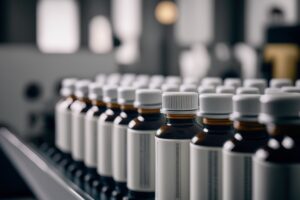Cannabidiol is the active ingredient in CBD extracts, but it’s only a single compound out of hundreds.
Cannabis plants produce a treasure trove of medicinal compounds called phytochemicals, each with unique effects. Researchers break down cannabis phytochemicals into three main types:
- Phytocannabinoids
Therapeutic compounds that include the “major” cannabinoid CBD and other “minor” cannabinoids like CBN, CBG, and THC - Terpenes
Caryophyllene, myrcene, limonene, pinene, and humulene are fragrant medicinal compounds that influence CBD taste and smell - Flavonoids
Cannflavin A/B/C, quercetin, kaempferol, apigenin, and orientin are anti-oxidant pigment compounds that affect the color and flavor of CBD extracts
Now, here’s where it gets interesting…
According to some research, the greater the variety of phytochemicals in your hemp extract, the better it may work to relieve everyday health conditions. This synergy is at the heart of what scientists call the CBD entourage effect and could explain why many people report improved benefits from full spectrum products compared to CBD isolate ones.

REVEALED: This CBD extraction process is the secret to getting the best entourage effect
What is the entourage effect?
Your body has special receptor sites in its endocannabinoid system where the therapeutic compounds in cannabis can bind to promote health benefits. CBD entourage effects are the result of a complex interaction between the combination of phytocannabinoids in hemp extracts and the cannabinoid receptors in your body.
Researchers initially discovered the endocannabinoid system by way of isolating tetrahydrocannabinol (THC) and cannabidiol (CBD) from the hemp plant. Isolates are radically purified “single-molecule compounds” that have only one type of cannabinoid in the extract and nothing else. Hemp isolates do not have the ability to produce entourage effects.
It was not until scientists experimented with raw hemp extracts that they observed a new phenomenon with a great deal of interest. Researchers using minimally processed “full spectrum” CBD oils and extracts found statistically significant improvements in study participants compared to isolate users. Results showed that the presence of other minor cannabinoids, like CBG, CBN, and CBDV, along with cannabis terpenes, flavonoids, and polyphenols in the mix, appeared to amplify the individual benefits of CBD. Scientists coined their hypothesis the “entourage effect,” and the moniker caught on.
How simple plant compounds produce powerful benefits
The CBD entourage effect works because the human body is equipped with an endocannabinoid system (ECS) and other signaling pathways. These special receptors interact with the different compounds in cannabis extracts to help you feel better.
Cannabinoid receptors (CB) number 1 and 2 are part of the ECS and regulate many of the human body’s most vital functions:
- CB1 receptor sites
Concentrated in your brain and central nervous system, modulating mood, stress response, appetite, and memory - CB2 receptor sites
Span your body from head to toe and are found chiefly in peripheral tissues and the immune system, influencing pain sensation and immune cell function
CB1 and CB2 receptors are not the only places in the body that interact with cannabis compounds. For instance, cannabidiol, the primary active ingredient in CBD hemp extract, does not bind directly to CB1 or CB2 receptor sites. Instead, CBD binds with TRPV-1, a signaling system that regulates inflammation, pain sensation, and injury healing. TRPV-1 is entirely separate from your ECS. But the two systems communicate and respond according to what the other is doing.
When phytochemicals in CBD hemp extract bind to these special receptors, they have the ability to interact directly with different body systems. In response to the activity, your body may improve mood, relieve anxiety, soothe muscle tension, reduce pain sensation, help you sleep better, or signal an anti-inflammatory response.
The quality of your CBD entourage effect comes down to the phytochemical diversity of your hemp extract. More cannabinoids, terpenes, and flavonoids mean a fuller, more therapeutic entourage effect from your CBD. That’s why it’s so important to choose a true full spectrum CBD or superior broad spectrum CBD product for maximum results.
How do I get the best entourage effect benefits?
It’s so easy to experience the power of the CBD entourage effect with true full spectrum CBD oils from Cannabiva!
We use only whole-plant cannabis sativa that’s flash-frozen immediately after it is harvested by hand. Subzero temperatures during the extraction process continually protect the delicate cannabinoid and terpene profile in our cannabis, so you get a virtually perfect phytochemical snapshot of the plant in every CBD dose.
Did someone say…FREE CBD?! Claim your 7-day CBD sample box while supplies last!
Full spectrum extracts are minimally processed compared to broad spectrum and CBD isolates. As a result, they retain a more complete phytocannabinoid profile and terpene mixture. Researchers believe full spectrum CBD is superior to broad spectrum and CBD isolate products because it has a greater variety of phytochemicals.
Final thoughts: The CBD entourage effect and you
Getting the best entourage effect from your CBD is all about phytochemical diversity! Phytochemicals are the naturally occurring plant medicines in cannabis. They interact with special endocannabinoid receptors in your body to help you feel better. Research shows that more phytochemicals in your CBD produce a fuller therapeutic experience.
Full spectrum CBD products are recommended for maximum entourage effects because they’re minimally processed and retain the most cannabinoids, terpenes, and flavonoids. Broad spectrum products with no THC are a perfect alternative for people who want the benefits of the entourage effect but would rather avoid the psychoactive THC cannabinoid altogether.
CBD entourage effect FAQ
Find answers to the most frequently asked entourage effect questions. Review our CBD 101 articles for beginners if you’re new to hemp medicines.















